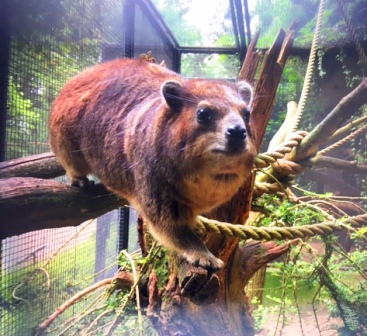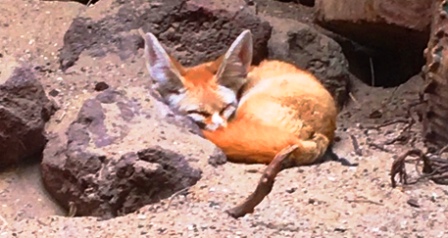My Dad and I visited this zoo in Amsterdam earlier this month, after we arrived in the Netherlands for Dad’s conference in Rotterdam. Called Artis for short, it somewhat reminds me of the Menagerie du Jardin des plantes in Paris, with old, Victorian-styled enclosures and buildings. Some animals that we saw for the first time included the fennec fox, the smallest of the world’s foxes, and the rock hyrax, a guinea pig-like mammal closely related to elephants and manatees. Both the fennec and the hyrax were kept in a house for small mammals. The fennec was asleep with its tail curled up over its body. I took a photo and shared it on whatsapp with my aunt, who loves fennec foxes. We were also very close to the hyrax, just a few centimeters from us and seperated by mesh. We also waited around an enclosure housing mandrills, where I managed to take several pictures of a male. I was hoping we would see a Congo peafowl, a rare species discovered in the 1930s, and the only true pheasant in Africa. Unfortunately, we never saw any, and although there was a cage with a sign for the Congo peafowl, all that was visible in there were some crested guineafowl, as well as a lilac-breasted roller, which also had a sign at this cage. However, the cage was filled with dense vegetation, so at least one could have easily been hiding. I hope to see Congo peafowl some other day at another zoo.
The zoo is notably the place where the last individual of the quagga died in 1883. The quagga is a kind of zebra that had stripes only on its head and neck, the body was brown, with white legs. In spite of its distinctive appearance, the quagga was actually a subspecies of the plains zebra, as proven by genetic analysis.
I forgot to mention that there were grey herons everywhere in Artis, no matter what part of the zoo we were at. They are considered ubiquitous here.
Link to their website.



Leave a Reply
You must be logged in to post a comment.